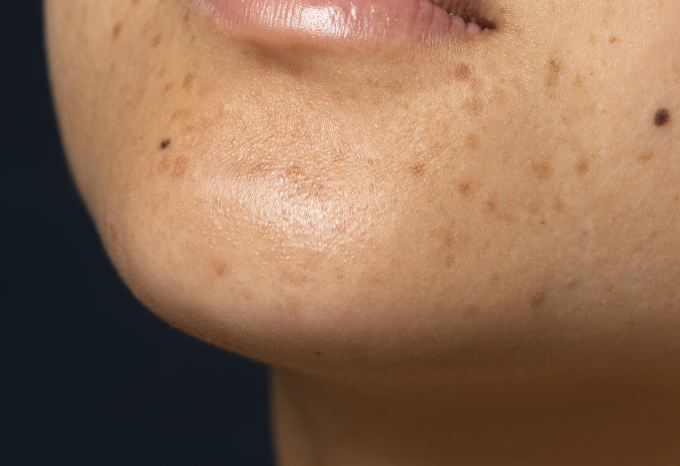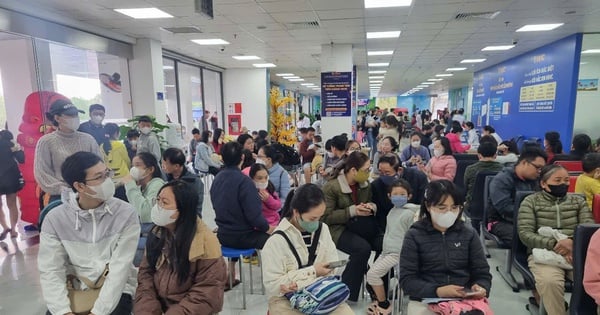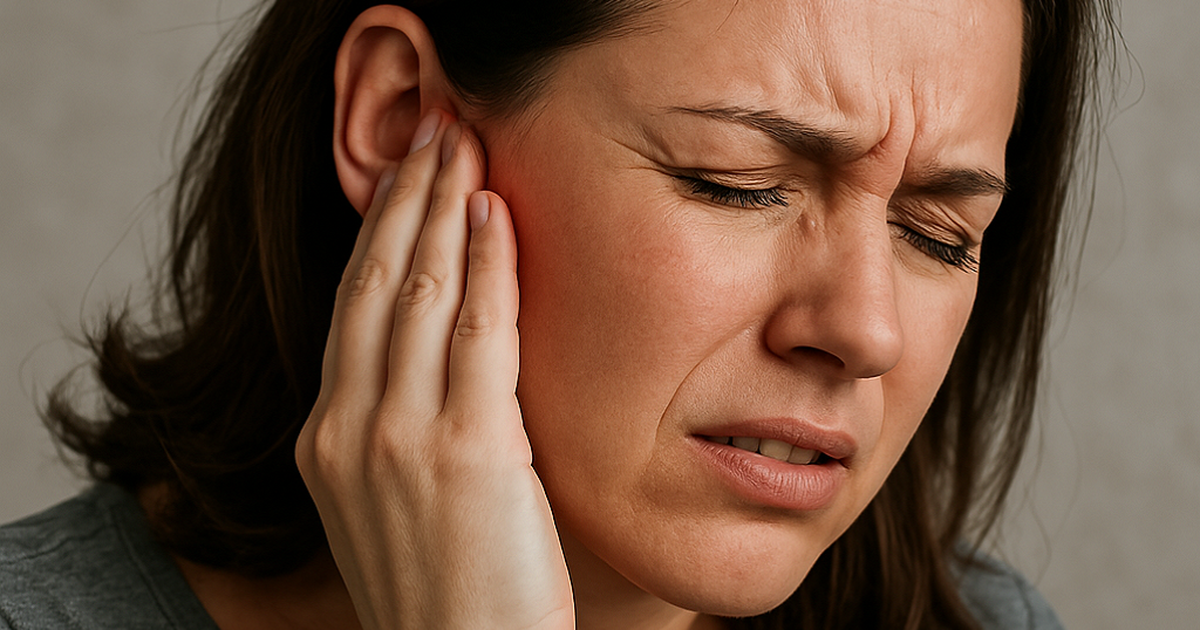I have had many small dark spots at the corners of my eyes since I was young. For the past two years, large age spots have appeared on my cheeks and hands, some as big as the tip of a finger.
Are age spots the same as melasma? How to treat them? (Thu Minh, 48 years old, Ho Chi Minh City)
Reply:
Melasma is a skin pigmentation disorder that occurs when melanin is overproduced, leading to the formation of brown patches or plaques on the cheeks, forehead, and nose.
Melasma is usually flat, darker than normal skin color, common in women 20-50 years old, especially during pregnancy and after giving birth. Melasma can darken and lighten over time, often worse in summer, lighter in winter; manifestations vary depending on size, color, shallowness, and depth.
Age spots are a special form of hyperpigmentation but are different from melasma. Age spots are larger, about 0.5-2.5 cm, dark brown or black, horny, raised on the skin surface; often appear on the face, arms, shoulders, chest. Age spots usually appear after the age of 60 and are a sign of aging due to frequent exposure to the sun. The older you are, the more spots there are, the darker and larger the color.
Age spots that are unusual in color, itchy, painful, or bleeding may be related to skin cancer. If you have these signs, you should go to a hospital with a dermatology or cancer specialist for proper diagnosis and treatment.

Skin appears dark spots, age spots affect appearance. Photo: Freepik
Melasma and age spots can be treated with many methods such as applying creams, taking medicine, peeling (chemical skin rejuvenation) or laser, IPL, electrophoresis, meso injection, microneedling... However, their characteristics are different, you should go to a medical facility with a dermatology - cosmetic skin department to determine the nature, skin condition as well as the level of melasma and age spots to have the best treatment regimen. Normally, people with mild hyperpigmentation can use skin lightening creams, oral medications or skin peels.
Treatment of melasma depends on the cause and the degree of superficial, medium, or deep melasma. In cases where melasma is caused by hormonal changes, pregnancy, or taking birth control pills, using cosmetics, or exposure to sunlight, it may decrease after giving birth or stopping exposure to the above causes.
Deep melasma and mixed melasma may require a combination of methods and multiple treatments to achieve effective treatment. For example, doctors combine topical and oral medications with methods such as lasers to break melanin into small pieces and mesotherapy to reduce the production of new melanin and inhibit the transport of melanin to the skin surface.
Lasers play a major role in treating age spots. This treatment requires 3-5 sessions, depending on the depth of the age spots. Your doctor may also recommend cryotherapy (applying or spraying liquid nitrogen) to the age spots, topical medications, or skin peels.
After treating melasma and age spots, you must avoid the sun with sunscreen and cover up carefully when going out. The doctor may prescribe some skin lightening products to limit the return of hyperpigmentation.
Master, Doctor Vu Thi Thuy Trang
Dermatology - Skin Aesthetics,
Tam Anh General Hospital, Ho Chi Minh City
| Readers send questions about dermatology - skin aesthetics here for doctors to answer |
Source link




![[Photo] Prime Minister Pham Minh Chinh chairs the regular Government meeting in March](https://vstatic.vietnam.vn/vietnam/resource/IMAGE/2025/4/6/8393ea0517b54f6791237802fe46343b)
![[Photo] Military doctors in the epicenter of Myanmar](https://vstatic.vietnam.vn/vietnam/resource/IMAGE/2025/4/6/fccc76d89b12455c86e813ae7564a0af)

























![[Photo] Quang Binh: Bright yellow vermicelli flowers in Le Thuy village](https://vstatic.vietnam.vn/vietnam/resource/IMAGE/2025/4/6/80efad70a1d8452581981f8bdccabc9d)


































































Comment (0)